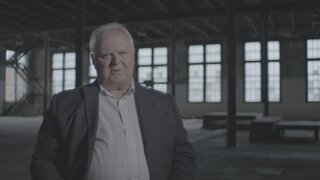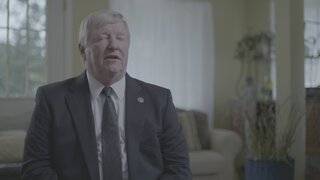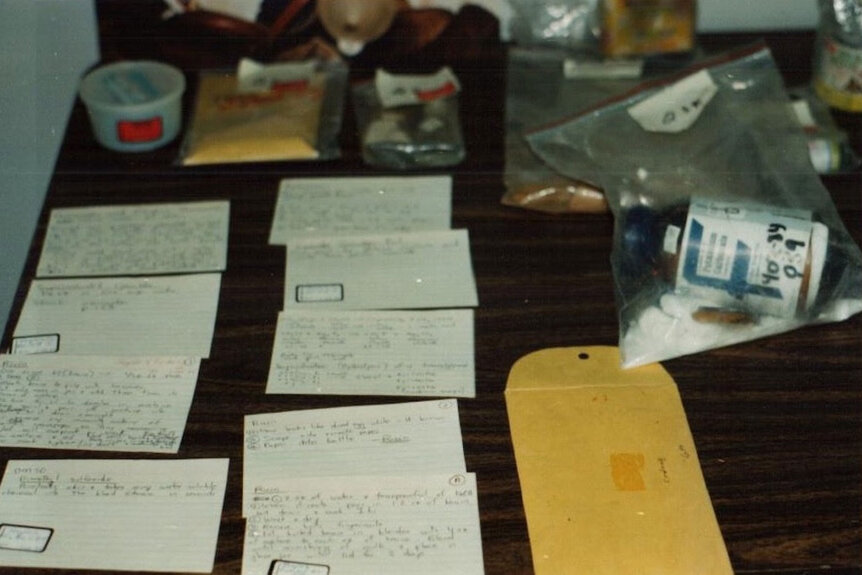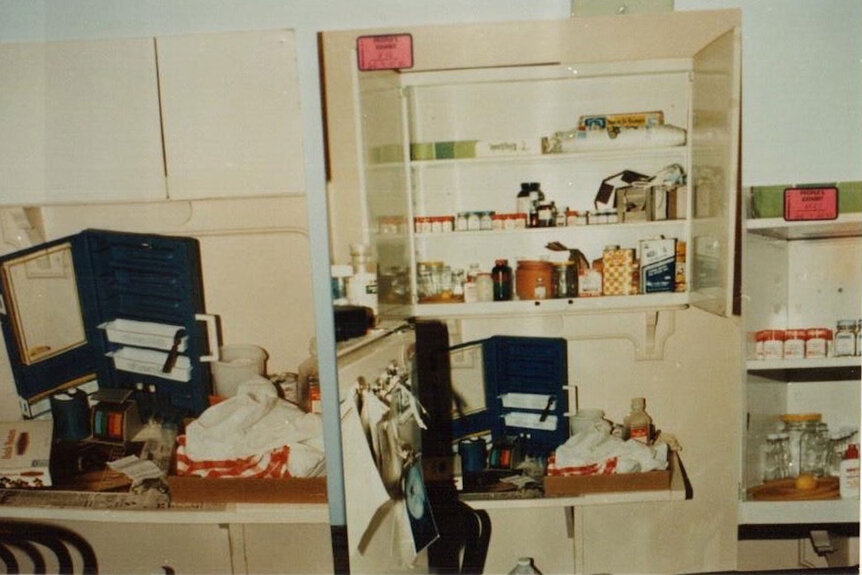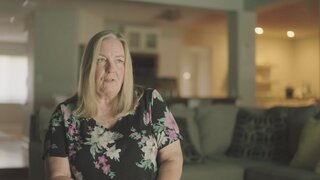Create a free profile to get unlimited access to exclusive videos, breaking news, sweepstakes, and more!
Serial Killer Physician’s ‘House Of Horrors’ Filled With Handwritten Recipes For Hospital Poisonings
While Dr. Michael Joseph Swango eventually pleaded guilty to four murders, his victim count may be as high as 60.
Murders A-Z is a collection of true crime stories that take an in-depth look at both little-known and infamous murders throughout history.
When Dr. Michael Joseph Swango was asked to leave his medical internship in Ohio after several suspicious patient deaths, he packed up his things and moved to Illinois, where he would be sent to prison for poisoning his co-workers. After his release, Swango ended up in New York, where he killed at least three people at the Veterans Affairs Medical Center.
Before the long arm of the law could catch up to him, he flew to Africa, where his penchant for poisoning people and murder continued. While Swango eventually pleaded guilty to just four murders, his victim count may be as high as 60.
Who Is Dr. Michael Swango?
Joseph Michael Swango was born in Tacoma, Washington, in 1954. The second of three children, he grew up in Quincy, Illinois. His father was a prominent U.S. Army officer and Vietnam War veteran, who allegedly bragged about his combat kills and suffered from alcoholism, according to the New York Post. Swango was an exemplary student and high school valedictorian. After two years in college, he enlisted in the Marines, but later returned to school at Quincy College to pursue a career as a doctor, reported the Chicago Tribune.
He then enrolled in Southern Illinois University School of Medicine, where his troubles began. His classmates found him strange and fiercely competitive, according to The Washington Post. After a number of patients died on his watch, his classmates began mockingly calling him “Double-O Swango” — like the fictional spy James Bond, he had a “license to kill,” they would say, according to The New York Times. While in school, Swango worked part-time as a paramedic and would never miss a shift, reported the Chicago Tribune. He was later accused of falsifying patient reports and threatened with expulsion, but he ultimately graduated, reported the Los Angeles Times.
Swango seemed to be obsessed with violence and kept scrapbooks of newspaper clippings of disasters, accidents, crime scenes and other incidents, according to The Columbus Dispatch newspaper. He was also fascinated with Nazis and the Holocaust, according to The Washington Post.
Despite almost getting thrown out of Southern Illinois University, Swango was accepted into an internship program at Ohio State University Medical Center in 1983 that put him on track to become a neurosurgeon. Soon after his arrival, however, staff were alarmed by an unusual number of patient deaths or illnesses, according to the Los Angeles Times. Swango seemed to always be on duty whenever these incidents occurred.
What Happened To Dr. Swango's Patients And Co-Workers?
A nurse would later tell police she saw Swango injecting an unknown substance into a patient’s IV right before they stopped breathing, according to the Los Angeles Times. In 1984, Swango claimed he discovered the dead body of patient Ricky DeLong, 21, while performing his rounds.
An autopsy would later reveal that a ball of gauze had been placed down DeLong’s throat. His death would be ruled a homicide, and his family sued Swango in 1986, believing him to be the murderer, according to UPI. In 2000, Swango would confess to the 1984 murder of Cynthia McGee, 19, by injecting her with a fatal dose of potassium, according to CBS News.
Not all of Swango’s poisonings ended in death. On one occasion, Swango picked up a bucket of fried chicken from a fast food restaurant for his fellow doctors on duty at Ohio State University. They became ill, and some vomited so hard that blood vessels in their eyes broke, reported the Los Angeles Times. The symptoms were consistent with arsenic poisoning.
An internal probe of Swango brought about no conclusive evidence, but the school still ended his neurosurgery residency, according to The Washington Post. Regardless of the allegations against Swango, several OSU doctors wrote him letters of recommendation for his application for a medical license.
In the summer of 1984, Swango returned to Quincy, where he obtained a job as an emergency medical technician with the Adams County Ambulance Service, reported The New York Times. His co-workers found him unusually grim. Swango allegedly cheered TV reports of murders, professed his admiration for serial killers and told them that he fantasized about a busload of children being impaled by a tanker, according to the Los Angeles Times.
One day, Swango brought a box of doughnuts to work. Five of his co-workers became violently ill, according to The New York Times. Weeks later, the co-workers laid a trap before they were dispatched, leaving behind a pitcher of unsweetened iced tea. When they came back, the tea was sweet, and it later tested positive for arsenic, according to the Los Angeles Times. A co-worker said he saw Swango leave the area where the pitcher had been left.
Swango was arrested in October 1984 for poisoning his co-workers, and during a search of his apartment, police found Tero ant poison, books on Satanism, guns, survival knives and recipe cards for pesticides, botulism and cyanide mixtures, according to the Los Angeles Times.
In August 1985, he was found guilty of aggravated battery and sentenced to five years in prison, reported The New York Times. He was profiled on ABC’s “20/20,” vehemently denying the charges against him and any connection to the deaths in Ohio. “I could never do any of the things that have been alleged I’ve done,” he said.
Swango was released from prison in 1987, after serving only two years. He immediately jumped back into the medical profession, claiming his battery conviction was the result of a bar fight, and at one point changing his name to David Jackson Adams. In 1989, he was working at a medical-career vocational school in Newport News, Virginia, when three co-workers became ill, although no charges were ever filed, according to CBS News.
He sought medical work in other states including South Dakota, but was rejected after it was discovered he had forged documents and lied about his criminal past, reported The New York Times.
In 1993, Swango was accepted into a one-year psychiatric residency program at The State University of New York at Stony Brook on Long Island.
“Standard procedures for checking applicants were not followed,” former school dean Dr. Jordan Cohen told People magazine.
As part of his residency, Swango began seeing patients at a Veterans Affairs Medical Center in Northport, New York. While there, he murdered at least three victims by lethal injection — Thomas Sammarco, 73, George Siano, 60, and Aldo Serini, 62, according to The New York Times. Investigators suspected they may not have been his only victims at the facility.
After Stony Brook was tipped off to Swango’s nefarious history, he was fired and effectively blacklisted from the medical industry in the U.S., reported The Washington Post.
Before police could conduct a full investigation into the suspicious deaths at the Northport VA Hospital, Swango fled the country to Zimbabwe. In late 1994, Swango used forged documents and false information to secure a job as a physician at Mnene Lutheran Mission Hospital in the city of Bulawayo. Patients there soon began dying under odd circumstances. Authorities in Zimbabwe would later issue a warrant for his arrest on charges that he poisoned seven patients, including five fatalities, according to The New York Times.
In June 1997, Swango returned to the U.S. to catch a flight to Saudi Arabia, where he had been offered a job as a doctor. Police arrested him at Chicago’s O’Hare Airport on fraud charges for presenting a false statement to Stony Brook and illegally distributing controlled substances, according to the Office of Inspector General. Swango ultimately pleaded guilty and was sentenced to three and a half years in prison.
Right before he was to be released from prison in early July 2000, Swango was charged with three counts of murder for the deaths at the Northport VA hospital, according to The New York Times. The federal indictment came after the victims’ bodies were exhumed and tested positive for poison.
Is Dr. Michael Swango Still Alive?
On Sept. 6, 2000, Michael Swango pleaded guilty to three counts of murder and was sentenced to three consecutive life sentences without the possibility of parole, according to the Associated Press. By making a deal with prosecutors, he was spared the death penalty, and the government of Zimbabwe agreed not to seek his extradition and pursue charges against him.
His subsequent guilty plea that October in the McGee murder earned him another life sentence, according to CBS News. Now 68, Swango is incarcerated at USP Florence ADMAX, a maximum-security federal penitentiary in Colorado known as “The Alcatraz of the Rockies.”
To learn more about Dr. Swango, watch Oxygen's series "License to Kill."
